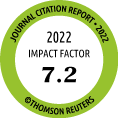|
Background:
Mast cell-derived
histamine is known
to act on dermal
fibroblasts and
contribute to
formation of an
intractable chronic
allergic dermatitis.
Although this
fibrotic event may
also occur in other
organs such as the
nasal mucosa, no
direct evidence has
been reported as to
whether
responsiveness to
histamine by
fibroblasts derived
from different
organs is of the
same intensity.
Furthermore, while
type 1 histamine
receptor (H1R)
blockers have been
shown to be
effective for
alleviation of the
symptoms of allergic
diseases, their
ability to affect
histamine-induced
tissue remodeling
has not yet been
clarified.
Objective:
Our aim was to study
the effect of
H1R-blockers on
histamine-induced
tissue remodeling.
Methods: A
macroarray assay was
used for a
comprehensive
analysis of
histamineinduced
gene expression by
normal human
fibroblasts.
Fibroblasts derived
from skin or nasal
mucosa were cultured
in the presence of
various
concentrations of
histamine, and the
synthesis of type 1
collagen was
measured by means of
semi-quantitative
reverse-transcriptase
polymerase chain
reaction and
enzyme-linked
immunosorbent assay.
To determine the
effect of H1R
blockers,
diphenhydramine
hydrochloride and
emedastine
difumarate were
investigated in this
assay.
Results:
Histamine induced
expression of
various kinds of fi
brogenic molecules
in fibroblasts.
Increased type 1
collagen expression
was observed in fi
broblasts treated
with high-dose (0.1
mM to 1 μM) and
low-dose (1 pM)
histamine. This
histamine-induced
type 1 collagen
synthesis was
effectively
diminished by
emedastine
difumarate. While
organ specificity
seems to be
involved, emedastine
difumarate is
considered to be an
effective drug for
reversal of such
histamine-induced
remodeling in the
skin.
Conclusions:
We found that the
expression of
fibroblast-derived
genes is
differentially
regulated by
different
concentrations of
histamine and that
the robustness of
the inhibitory
action of H1R
blockers is
different for
skin-derived and
nasal mucosa-derived
fibroblasts. We
believe that our
findings may
contribute to a
better understanding
of the mechanisms of
histamine-induced
tissue remodeling
and provide
information useful
for the management
of refractory
allergic dermatitis.
Key words:
Histamine.
Fibroblasts.
Collagen.
Antihistamines.
Emedastine
difumarate. Tissue
remodeling. Atopic
dermatitis.
|



